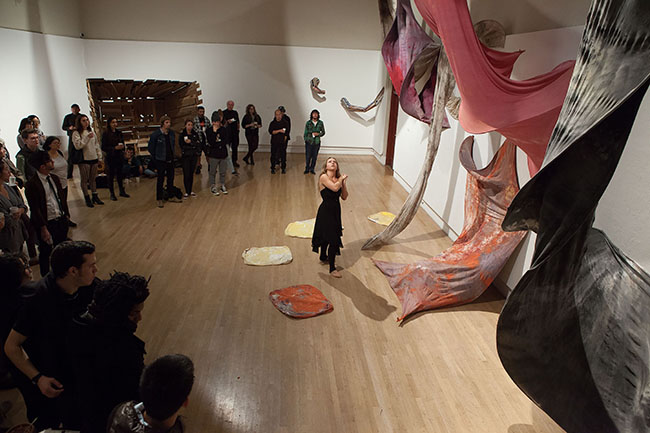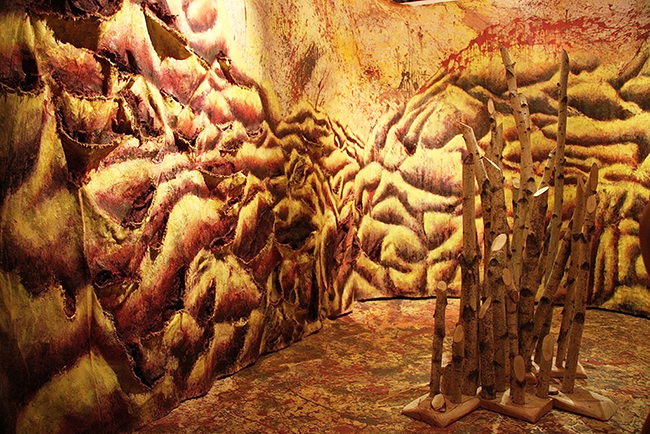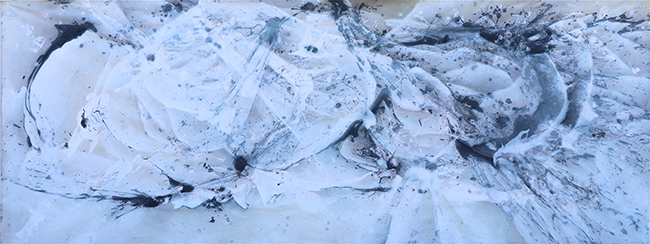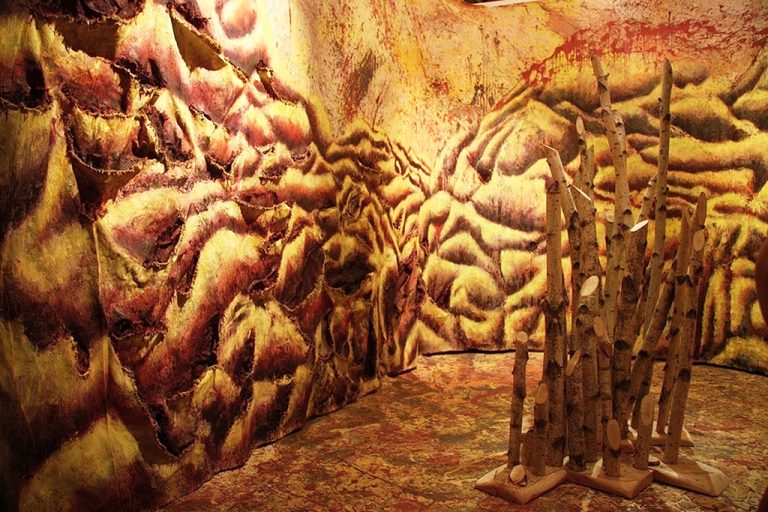Carolin Rechberg approaches art the way a traveler approaches new terrain—curious, open, and alert to every shift in light, sound, and surface. Born in Starnberg, Germany, she’s drawn to movement—not just physical, but creative. Her work stretches across painting, sculpture, ceramics, performance, poetry, photography, sound, textiles, and installation. It’s not an inventory of skills. It’s a way of staying in motion. What matters to Rechberg isn’t the finished object—it’s what happens in the making. She treats process like language, where gestures, materials, and sensations speak more clearly than explanation ever could.
She works with her whole body. She listens with her hands. Her art invites you to step into that space—to feel, not figure out. She’s not trying to decode anything. She’s showing you what it’s like to be fully engaged with the world—through sound, texture, rhythm, and breath. Let’s look at three pieces that show how she thinks and works.

Song of Myself
Mixed Media Installation, Site-Specific (10 x 10 x 5 meters), 2015
This isn’t something you look at from a distance. It’s something you walk into. Song of Myself was made to be activated—not just seen, but sounded. Its structure captures the shape of sound in space. You enter it. You speak. You sing. And the space responds. The installation becomes a body, and you become a part of its voice.
The reference to Whitman is there, but this is no literary nod. Rechberg isn’t quoting a poem—she’s giving it breath. The materials form a kind of sculptural score. The space waits for someone to enter and bring it alive. It’s about presence—your breath, your sound, your being there.
More than anything, this work is a reminder: sound isn’t just what we hear—it’s what we leave behind. In Rechberg’s hands, the room becomes a memory chamber, a place where vibrations linger like ghosts. It’s both physical and ephemeral. It doesn’t exist until you step inside and wake it up.

Karuna
Installation – Canvas, acrylic, house paint, oil paint, cord, burlap, birch trees, pinewood, tracing paper, text – (4 x 3 x 3 meters), 2011
_ Karuna_ is a space that doesn’t push. It pulls. The materials are grounded—cord, wood, burlap—but they carry more than weight. They carry intention. The installation reads like a whisper from the forest: restrained, thoughtful, and full of presence.
The name comes from Aldous Huxley’s The Island, where birds call out “attention” to keep people present. Rechberg isn’t quoting directly, but she’s doing something similar. This space doesn’t yell. It surrounds. Paintings hang like veils. Tracing paper rustles. The smell of pine hovers. And everything slows down.
_ Karuna_ means compassion in Sanskrit, but not the kind you perform. This is deeper. It’s the kind that notices. The kind that listens. The kind that says: you’re here, and that matters. Text is included, but it’s not the focus. What you sense in your body—the pull of the materials, the hush in the space—is what tells the story.

Genesis
Mixed media painting on canvas – (183 x 456 cm), 2016
With Genesis, Rechberg returns to painting, but not conventionally. The work doesn’t sit quietly on the wall. It stretches out, expansive and textured, more like terrain than canvas. Paint is part of it—but so are other materials, stitched or embedded into the surface. It reads like a landscape mid-formation.
The title suggests beginnings. But not as a single point of origin. This is about the continuous act of becoming. Shapes rise and blur. Colors shift like weather. There’s no clear figure. No fixed meaning. It feels alive, like something still unfolding.
This isn’t a picture of creation—it’s the feeling of it. The kind of beginning that happens again and again. The kind that doesn’t have a finish. As with much of Rechberg’s work, you don’t need to understand it. You just need to be with it.
In all three pieces, Rechberg’s intent is steady: to bring you into contact with the now. Her materials change, but the thread is consistent. She doesn’t separate living from making. Her work isn’t about spectacle. It’s about presence. Each piece invites a different way of sensing—a new pace, a new awareness.
She offers no explanations, no final messages. Just invitations. To listen. To step closer. To breathe with the space around you.
In a time when so much art is built to be consumed quickly, Carolin Rechberg gives you something else—something slower, quieter, and far more lasting. Her work is a place you return to, again and again, not to understand more, but to feel more.

